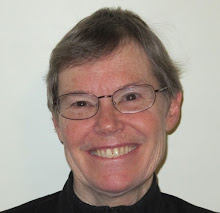As I was preparing the column, I spent some time investigating the history and development of Sputnik. I was dismayed to read that Sputnik 1 was too small to be seen with the naked eye. It was only 2 feet in diameter. What we saw, then, was the much larger rocket stage which had gone into orbit with the tiny satellite. Well, our excitement 50 years ago was real. No matter which piece of technology we saw passing high overhead, it was part of the Russian-launched Sputnik program.
Here is the text of my Remembering Danvers column for October 2007:
Watching Sputnik and other space marvels
By Sandy Nichols Ward
I remember lying on the ground and gazing up at the sky in hopes of seeing “Sputnik”, the first artificial satellite to orbit the Earth. I didn’t know what to expect. The idea of a man-made satellite going round and round in the space above us was very new. The fact that our parents invited us to stay out at night for this purpose was exciting. We spread out a blanket on the front lawn of our house in Danvers, and lay down to wait for Sputnik to come.
There was a problem with our first attempt. Too many trees surrounded our yard. We could only see the sky directly above us, not to the horizons. This reduced our chance of seeing Sputnik. So on another evening we climbed up to the top of a big sloped road-cut beside Route 1, a good place to get a full view of the sky and the horizon to the west. We lay on that rather steep slope, on blankets over the lumpy-bumpy surface of grass tufts and gravel: my father, my mother, my sister and I. We could see over Route 1 and the beginning of the New Hampshire-Maine turnpike, as we called Rte 95 then.
That night, that clear October night in 1957, we did see Sputnik! A small point of light like a tiny star passed across the sky. It wasn’t as close or fast as an airplane, but of course it moved more quickly than a star, so we could be quite sure that we were seeing Sputnik. Wow! It arrived at the expected time, on its schedule of circling the Earth every 96 minutes. This was a thrilling moment.
I didn’t understand then what impact Sputnik might have on my life. I was a young teenager, just beginning high school. Russia’s successful launch of this satellite surprised and startled the United States. U.S.-Soviet relations were quite tense in those days, and everything was seen as a competition. Sputnik provided a push for rapid reform of American science education. We had to catch up with the Russians. Two years later I was in science classes that used an experimental new textbook, which I liked. It combined physics and chemistry into one curriculum with innovative hands-on science experiments that were fun to do. The textbook was so new that we got it in paperback installments. We had a feeling of being adventurers into this new way of learning science. My science teacher urged me to study Russian, which I did for several years in college. I also remember my excitement watching, on a college TV in 1962, the launch of John Glenn’s first orbital flight.
Years later, as a wife and new mother, I returned to Danvers to visit my parents in time for the Moon Landing. We sat together in the living room and watched television on July 20, 1969, as astronaut Neil Armstrong took his first step onto the surface of the moon. My infant son Chris was sleeping in my lap as I witnessed this amazing feat. Neil said, “That’s one small step for a man, one giant leap for mankind!” and I suddenly realized that my son would grow up entirely in the Space Age, taking these marvels for granted instead of gathering friends and relatives for a very special TV-viewing party, as we did in Danvers that night. It is now (October 2007) the 50th anniversary of Sputnik and the Space Age.

No comments:
Post a Comment